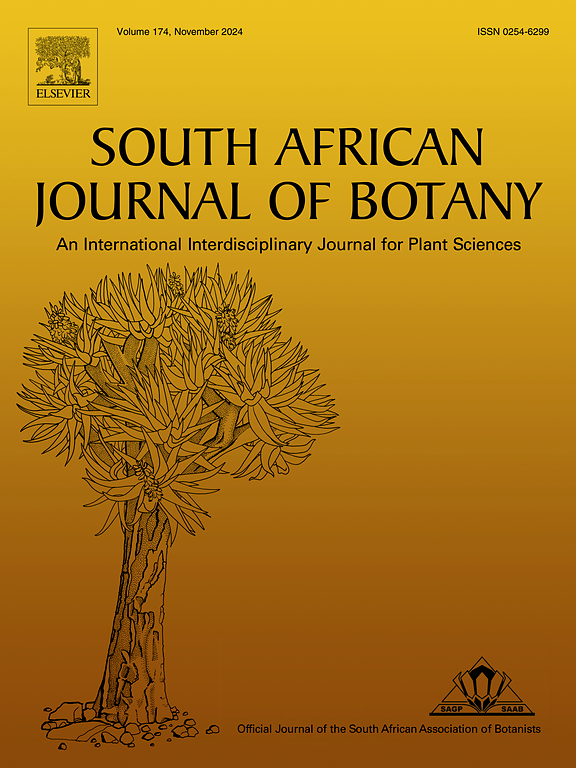A phytochemical content analysis, and antioxidant activity evaluation using a novel method on Melilotus officinalis flower
IF 2.7
3区 生物学
Q2 PLANT SCIENCES
引用次数: 0
Abstract
Conducting content analysis is very important to elucidate and expand the different usage areas of plant components. Today's content analysis methods provide very reliable results. However, the high cost of these methods and the need for trained personnel bring other challenges. Therefore, simple, fast, and low-cost content analysis methods are a great need. In this study, the phenolic content of Melilotus officinalis flower extracts was investigated using LC-MS/MS analysis, and its antioxidant activity was determined with a novel method employing a PVC membrane sensor. In the method, for the first time, the antioxidant activities of M. officinalis flowers were determined in an economical, sensitive, fast, and stable manner using a PVC potentiometric sensor. Sensor measurements were performed using DPPH and FCR molecules, resulting in 25.71 mg.g-1 activity values and 117.524 mg.g-1, respectively. LC-MS/MS analysis was conducted to investigate the presence of 45 standard phenolic compounds in M. officinalis. The results revealed that coumarin and isoquercitrin were the major phenolic compounds in the M. officinalis flower extract. The findings of LC-MS/MS analyses of the extracts show moderate phenolic content presence in the M. officinalis flower extracts. The total phenolic content determined by LC-MS/MS analysis was consistent with the PVC membrane sensor analysis results. The studies of molecular docking aimed to identify the most effective active sites, and the Moldock scores (-57.13, -105.93) and binding energies (4.5 kcal.mol-1, -7.9 kcal.mol-1) of coumarin and isoquercitrin molecules. The results of molecular docking studies suggest that isoquercitrin exhibits a stronger inhibitory effect on DD-peptidase enzymes compared to coumarin.
采用新方法对 Melilotus officinalis 花进行植物化学成分含量分析和抗氧化活性评估
进行含量分析对于阐明和扩展植物成分的不同用途领域非常重要。当今的成分分析方法可以提供非常可靠的结果。然而,这些方法的高成本和对训练有素人员的需求也带来了其他挑战。因此,亟需简单、快速、低成本的成分分析方法。本研究采用 LC-MS/MS 分析方法对 Melilotus officinalis 花提取物中的酚含量进行了研究,并利用 PVC 膜传感器的新方法测定了其抗氧化活性。在该方法中,首次使用 PVC 电位传感器以经济、灵敏、快速和稳定的方式测定了甜叶菊花的抗氧化活性。传感器使用 DPPH 和 FCR 分子进行测量,结果分别为 25.71 mg.g-1 活性值和 117.524 mg.g-1。通过 LC-MS/MS 分析,研究了 M. officinalis 中 45 种标准酚类化合物的存在情况。结果显示,香豆素和异槲皮素是欧当归花提取物中的主要酚类化合物。萃取物的 LC-MS/MS 分析结果显示,欧当归花萃取物中含有适量的酚类物质。LC-MS/MS 分析测定的总酚含量与 PVC 膜传感器分析结果一致。分子对接研究旨在确定最有效的活性位点,以及香豆素和异槲皮素分子的 Moldock 得分(-57.13,-105.93)和结合能(4.5 kcal.mol-1,-7.9 kcal.mol-1)。分子对接研究结果表明,与香豆素相比,异槲皮素对 DD 肽酶具有更强的抑制作用。
本文章由计算机程序翻译,如有差异,请以英文原文为准。
求助全文
约1分钟内获得全文
求助全文
来源期刊

South African Journal of Botany
生物-植物科学
CiteScore
5.20
自引率
9.70%
发文量
709
审稿时长
61 days
期刊介绍:
The South African Journal of Botany publishes original papers that deal with the classification, biodiversity, morphology, physiology, molecular biology, ecology, biotechnology, ethnobotany and other botanically related aspects of species that are of importance to southern Africa. Manuscripts dealing with significant new findings on other species of the world and general botanical principles will also be considered and are encouraged.
 求助内容:
求助内容: 应助结果提醒方式:
应助结果提醒方式:


